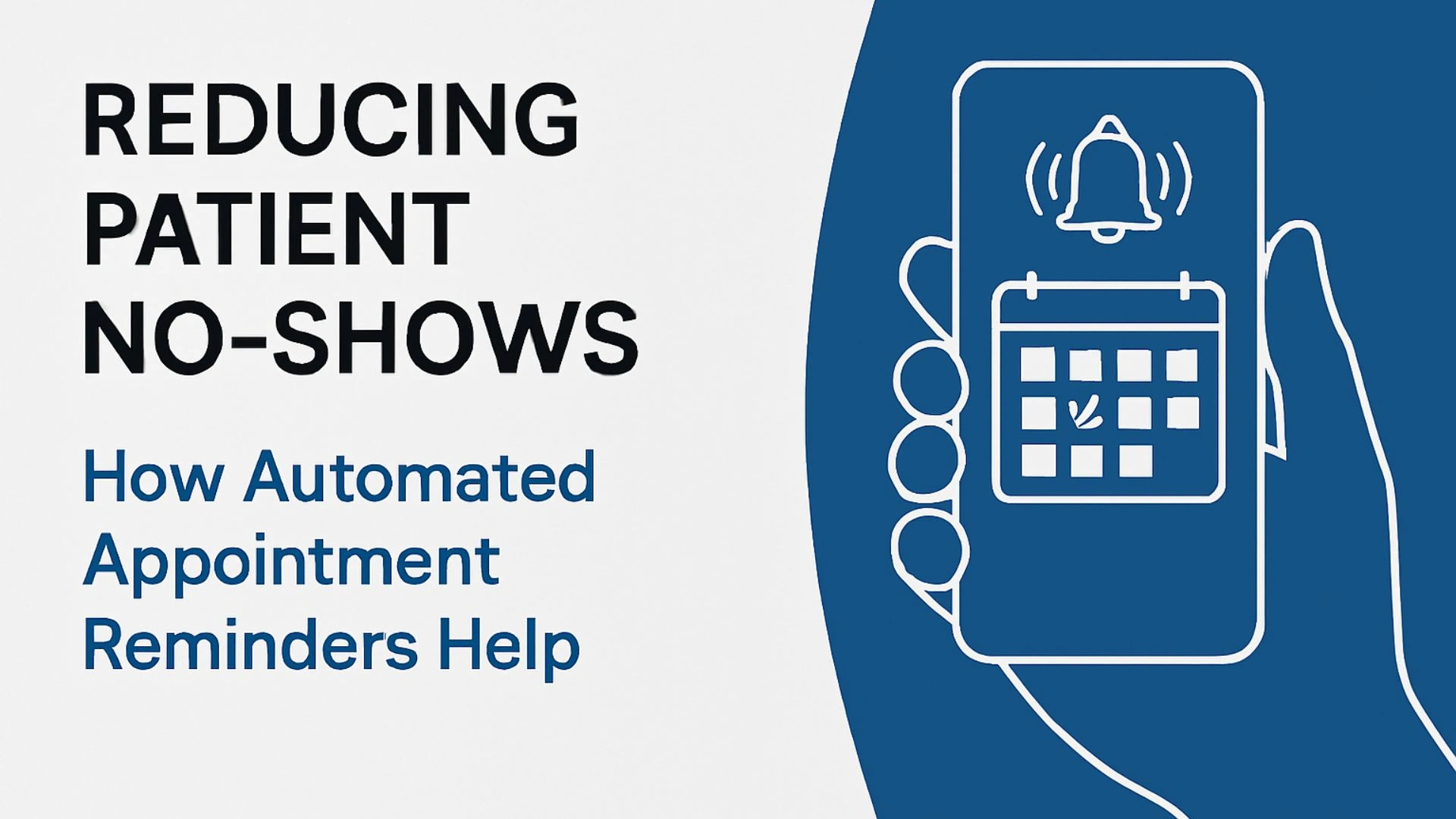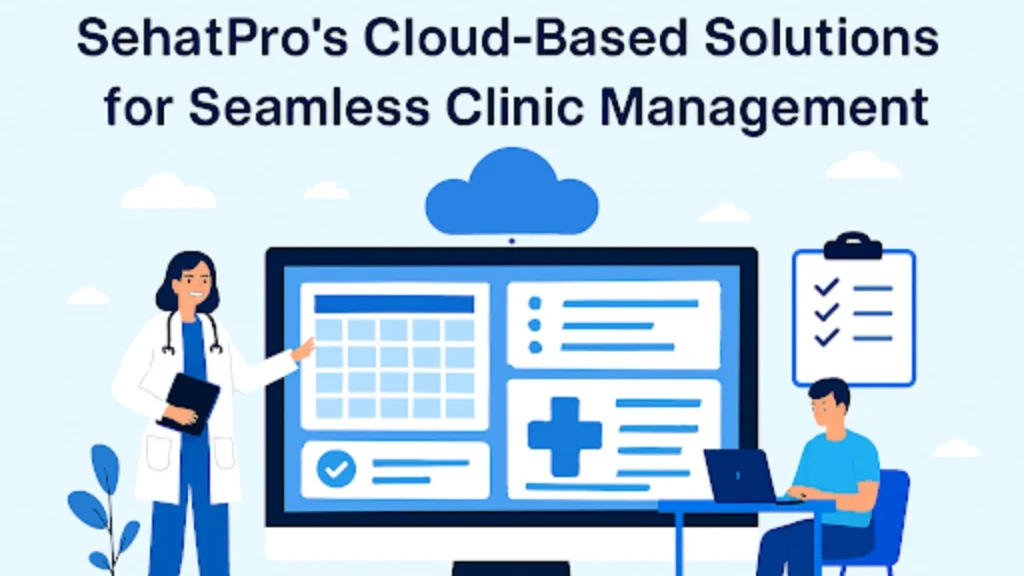Why Do Patient No-Shows Continue to Be a Problem?
Patient no-shows have long been a significant challenge for healthcare providers. These missed appointments can lead to wasted resources, disrupted schedules, and even financial losses. Despite the best efforts of healthcare practices, the occurrence of no-shows remains a persistent issue. But why do patients fail to show up for scheduled appointments in the first place?
There are a variety of reasons behind no-shows, ranging from simple forgetfulness to personal or financial barriers. Sometimes, patients may not fully understand the importance of an appointment, while other times, they may be unable to attend due to work or family obligations. In some cases, a lack of clear communication or reminders can also contribute to a patient forgetting their appointment.
As no-shows affect both the patient and the healthcare provider, it’s clear that finding effective solutions to this issue is essential. Fortunately, advancements in healthcare technology—particularly automated appointment reminder systems—are proving to be an effective tool for reducing patient no-shows and improving overall clinic efficiency.
How Can Automated Appointment Reminders Help Reduce Patient No-Shows?
Automated appointment reminders are designed to remind patients of their upcoming appointments through various communication channels such as email, text messages, phone calls, or even mobile apps. These reminders serve as a simple but powerful solution to one of the most common reasons behind missed appointments—forgetfulness. By sending timely and consistent reminders, healthcare providers can increase the likelihood that patients will remember their scheduled time and show up for their appointments.
The beauty of automated reminders lies in their efficiency and ease of use. Instead of relying on manual phone calls, which are time-consuming for staff and often ineffective, automated systems can send reminders at the right time and in the preferred format for each patient. This not only saves clinic staff time but also ensures that reminders are received consistently and on time.
Furthermore, these reminders can be personalized to suit the needs of each patient. For example, reminders can include relevant information such as the patient’s name, appointment time, location, and any pre-appointment instructions. This level of customization helps ensure that the reminder is clear and provides all the necessary details to avoid confusion.
What Are the Benefits of Automated Appointment Reminders for Healthcare Providers?
Automated appointment reminders provide numerous benefits for healthcare providers, both in terms of improving patient attendance and streamlining administrative processes. Here’s how they help:
- Reduced No-Shows: The most obvious benefit of automated reminders is the reduction in patient no-shows. Research has shown that automated reminders can significantly increase patient attendance, which helps reduce the financial losses associated with missed appointments.
- Increased Efficiency: Automated reminders free up valuable staff time by reducing the need for manual calls. Staff can focus on other tasks, such as patient care, while the system handles the routine task of sending reminders. This increases the overall efficiency of the clinic or healthcare facility.
- Improved Patient Communication: With automated reminders, patients receive clear and timely communication about their appointments. This improves the patient experience and fosters better relationships between healthcare providers and their patients. Well-informed patients are more likely to adhere to appointment schedules and trust their healthcare providers.
- Better Resource Allocation: When patients show up for their appointments as scheduled, healthcare providers can allocate resources—such as time, staff, and equipment—more effectively. With fewer cancellations or rescheduling requests, healthcare practices can operate more smoothly and serve more patients, improving revenue and workflow.
- Cost-Effective Solution: While implementing an automated reminder system may involve an initial investment, the return on investment is substantial. Reducing the number of missed appointments means fewer unproductive hours for staff, more efficient use of healthcare resources, and less need to overbook patients to compensate for no-shows. This helps increase profitability over time.
How Do Automated Appointment Reminders Improve the Patient Experience?
While healthcare providers benefit from reduced no-shows and improved clinic efficiency, patients also stand to gain from automated appointment reminders. In fact, these reminders are a powerful tool in enhancing the overall patient experience. Here’s how:
- Convenience and Accessibility: Automated reminders are sent through the channels that patients prefer, whether it’s text messages, emails, phone calls, or mobile app notifications. This provides patients with multiple ways to receive reminders, making it more convenient for them to confirm or reschedule appointments.
- Reduced Stress and Anxiety: Many patients experience anxiety before appointments, particularly if they are for important procedures or medical check-ups. Automated reminders can alleviate this stress by providing patients with clear instructions and a sense of certainty about the time and location of their visit. This leads to improved patient satisfaction.
- Increased Engagement: Automated reminders also encourage patients to engage with their healthcare providers. By including options to confirm, reschedule, or cancel appointments directly within the reminder, patients have more control over their healthcare journey. This reduces the likelihood of patients ignoring their appointment and helps ensure they take action if they are unable to attend.
- Timely Follow-Ups: In addition to reminders about upcoming appointments, automated systems can also send follow-up reminders about necessary tests, medications, or future appointments. This kind of ongoing communication ensures that patients stay on top of their health needs and helps them remain engaged in their healthcare plan.

What Features Should a Good Automated Appointment Reminder System Include?
While many automated appointment reminder systems are available, not all of them offer the same features or level of customization. To be truly effective in reducing patient no-shows, a good system should have the following features:
- Multiple Communication Channels: Patients have different preferences when it comes to receiving reminders. A good system should support various channels such as SMS, email, voice calls, and app notifications to ensure that reminders are received through the preferred method.
- Customizable Content: Reminders should be tailored to each patient’s specific appointment details. This includes the patient’s name, appointment time, location, and any pre-appointment instructions. The ability to customize the message for clarity and personalization is key to improving patient engagement.
- Flexible Scheduling: A good system should allow healthcare providers to schedule reminders based on patient preferences. For example, some patients may prefer to receive a reminder 24 hours before the appointment, while others may need a reminder a few days in advance. The system should be able to accommodate these preferences.
- Confirmation and Rescheduling Options: A great feature of automated reminders is the ability for patients to confirm, cancel, or reschedule appointments directly from the reminder. This reduces the administrative burden on healthcare staff and allows patients to manage their appointments more efficiently.
- Automated Follow-Ups: In addition to appointment reminders, an ideal system should also include follow-up reminders for future appointments, tests, or medication refills. This helps maintain ongoing communication with patients and ensures that they stay on top of their healthcare needs.
How Does Automated Appointment Reminders Impact Clinic Revenue?
Patient no-shows directly impact a clinic’s revenue, as each missed appointment represents lost income. By reducing the frequency of no-shows, automated appointment reminders have a direct positive effect on a clinic’s bottom line. Here’s how:
- Improved Revenue Streams: With fewer missed appointments, clinics can better utilize their resources and see more patients. This increases overall revenue, as healthcare providers can optimize their schedules and reduce the need for overbooking or additional staff.
- Lower Administrative Costs: No-shows often lead to wasted administrative time, including phone calls to re schedule appointments or confirm attendance. Automated reminders reduce the need for manual follow-ups, cutting down on administrative overhead and improving clinic efficiency.
- Optimized Time Slots: When appointments are kept, clinics are able to maximize their time slots, which means they can serve more patients in a given day. The ability to reallocate unused slots due to patient cancellations or no-shows means more income potential for the practice.
What Challenges Should Healthcare Providers Consider with Automated Appointment Reminders?
While automated appointment reminder systems offer many benefits, healthcare providers should be aware of some potential challenges. These may include:
- Patient Preferences: Some patients may not be comfortable with or receptive to automated reminders, particularly older patients who may be less familiar with digital communication. It’s important for healthcare providers to ensure that their systems are accessible and user-friendly for all patients.
- -Cost of Implementation: Implementing an automated reminder system requires an upfront investment, both in terms of money and time. Healthcare providers must weigh the cost of the system against the long-term benefits, including reduced no-shows and improved patient satisfaction.
- System Integration: Automated reminder systems must be integrated with the clinic’s existing scheduling software and electronic health records (EHR) system. This can be complex, especially if the clinic uses multiple systems that do not communicate well with each other.
FAQs on Reducing Patient No-Shows with Automated Appointment Reminders
1. How do automated appointment reminders reduce patient no-shows?
Automated appointment reminders reduce no-shows by providing patients with timely, clear notifications about their upcoming appointments, helping them remember their scheduled time and take action if they need to reschedule.
2. Can automated appointment reminders be customized?
Yes, automated reminders can be customized to include the patient’s name, appointment time, location, and other relevant details. This makes the reminders more personalized and effective.
3. What communication channels can automated appointment reminders use?
Automated reminders can be sent via various channels, including SMS, email, phone calls, and mobile app notifications, ensuring patients receive them through their preferred method.
4. Can patients confirm, reschedule, or cancel appointments via automated reminders?
Yes, many automated reminder systems allow patients to confirm, reschedule, or cancel their appointments directly from the reminder, which streamlines the process and reduces administrative work.
5. How does reducing patient no-shows impact clinic revenue?
By reducing no-shows, clinics can optimize their schedules, see more patients, and improve revenue. Additionally, fewer missed appointments mean fewer administrative resources spent on rescheduling, resulting in cost savings.



